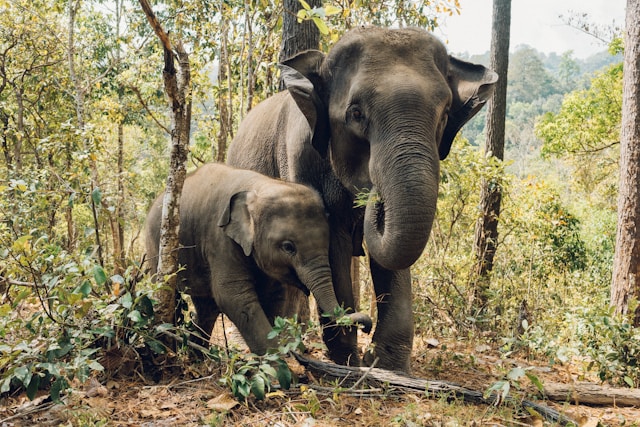
by Deep Green Resistance News Service | Feb 21, 2013 | Repression at Home
By Fred Pearce / Yale Environment 360
Where is Sombath Somphone? With every day that passes, the fate of one of south-east Asia’s most high-profile environmental activists, who was snatched from the streets of Laos in December, becomes more worrisome.
His case has been raised by the State Department and countless NGOs around the world. But the authorities in Laos have offered no clue as to what happened after Sombath was stopped at a police checkpoint on a Saturday afternoon in the Lao capital of Vientiane as he returned home from his office. It looks increasingly like state kidnap — or worse, if recent evidence of the state-sponsored killings of environmental campaigners in other countries is anything to go by.
Personal danger is not what most environmentalists have in mind when they take up the cause of protecting nature and the people who rely on it in their daily lives. But from Laos to the Philippines to Brazil, the list of environmentalists who have paid for their activism with their lives is growing. It is a grim toll, especially in the last year.
One of the most grisly cases occurred last year in Rio de Janeiro on the final day of the Rio+20 Earth Summit. On the afternoon of June 22, delegates from throughout the world — me included — were preparing to leave for the airport as Almir Nogueira de Amorim and his friend João Luiz Telles Penetra were setting sail for a fishing trip in the city’s Guanabara Bay.
The two men, besides being fishermen, were leaders of AHOMAR, the local organization of seamen, which they had helped set up three years earlier to fight the construction of gas pipelines across the bay to a new refinery run by the Brazilian national oil company Petrobras. The pipelines, they said, would cause pollution, and the engineering works would destroy fisheries.
The issue they were raising — protecting the livelihoods of people who used natural resources — was at the heart of the Rio conference’s agenda for sustainable development. But someone in Rio saw it as a threat. Two days later, the bodies of the two men had been found. One was washed up on the shore, hands and feet bound by ropes. The other was found at sea, strangled and tied to the boat, which had several holes in the hull.
This was no isolated assassination. In the three years since AHOMAR was set up, two other campaigners had been murdered. To date nobody has been convicted of any of the offenses. The refinery is expected to open early next year.
The month before the two Brazilian fishermen were murdered, a civil servant on the other side of the world who was campaigning against a planned hydroelectric dam on the southern Filipino island of Mindanao was shot death. Margarito Cabal was returning home from visiting Kibawe, one of 21 villages scheduled to be flooded by the 300-megawatt Pulangi V hydroelectric project.
Cabal’s assailant escaped and remains unknown. No prosecution has followed, but attention has focused on government security forces. According to the World Organization Against Torture, an international network based in Switzerland that has taken up the case, Filipino soldiers had for several weeks been conducting military operations in and around Kibawe and had attacked peasant groups opposing the dam. If the soldiers did not do the deed, they certainly helped create an atmosphere in which environmentalists were seen as a target for violence.
Cabal is the thirteenth environmentalist killed in the Philippines in the past two years. Seven months earlier, a Catholic missionary was murdered after opposing local mining and hydro projects. “The situation is getting worse,” says Edwin Gariguez, the local head of Caritas, the Catholic aid charity.
And it’s getting worse in other nations as well. NGOs such as Human Rights Watch agree that 2012 was also a new low for human rights in Cambodia, with campaigners against illegal logging and land grabs targeted by state security personnel and by gangsters working for companies harvesting the nation’s natural resources.
One of those campaigners was Chut Wutty, a former soldier and one-time Cambodian activist with Global Witness, a UK-based NGO that highlights links between environmental exploitation and human rights abuses. When Global Witness was expelled from the country a few years ago, Wutty formed the Natural Resource Protection Group to help Cambodian villagers confront illegal loggers.
But last April, Wutty was shot dead, apparently by a group of military police that he encountered while taking local journalists to see illegal loggers in the west of the country. According to a government report, Wutty’s assailant was killed at the scene, allegedly by a forest ranger. A provincial court recently abandoned an investigation into Wutty’s murder and released the ranger. One of the journalists, who fled into the forest when the shooting started, says she does not believe the official version of what happened, and human rights groups have also said they find it implausible.
Criminality is at the heart of much of the destruction of the world’s forests. A recent report from the UN Environment Programme concluded that up to 90 percent of the world’s logging industry was in one way or another outside the law. In such circumstances, violence against those who try to protect the forests can become endemic.
Read more from The Guardian: http://www.guardian.co.uk/environment/2013/feb/21/activism

by Deep Green Resistance News Service | Feb 20, 2013 | Lobbying, Movement Building & Support, Obstruction & Occupation, Property & Material Destruction, Strategy & Analysis
Resistance against exploitation is nothing new. History is full of examples of people—perfectly ordinary people—fighting back against injustice, exploitation, and the destruction of their lands and communities. They move through whatever channels for action are open to them, but often, left with no legal or political power, they turn to militant means to defend themselves.
It is hardly a simple decision, and rarely the first or preferred option, but when all other paths have been explored and found to lead nowhere, militant action becomes the only realistic route left. Movements and communities come to that truth in many different ways, but almost without fail, they come to it borne by a collective culture of resistance. One inspiring example is the Bolt Weevils.
The Bolt Weevils were a group of farmers in Minnesota who spent several years in the late 1970s perfecting the fine art of sabotaging interstate electrical transmission lines. Their efforts have been memorialized in numerous books and songs, and their story is a hopeful one we would do well to remember and re-tell.
The story of the Bolt Weevils begins in the mid-1970s, when the Cooperative Power Association (CPA) and United Power Association (UPA) proposed construction of a new interstate high-voltage transmission line. Taking its name from the two cooperatives, the CU Powerline would carry current from a generating station in North Dakota across west-central Minnesota to feed the urban centers of the Twin Cities.
In determining a route for the powerline, small farmers land was rated less important than large industrial farms, and as a result, the proposed route crossed the property of nearly 500 landowners. Outraged at being trodden over to for the benefit of industry and urbanism, resistance against the project began immediately in earnest.
Once residents found out about the project, they refused to sign land easements. Local towns passed resolutions opposing the project and reject construction permits. The powerline went to review before the State’s Environmental Quality Council, which went ahead and granted the necessary permits in the face of overwhelming public opposition.
When surveyors showed up out of the blue in one farmer’s fields, he smashed their equipment with his tractor and rammed their vehicle. The action of that one farmer helped catalyze popular sentiments into action. Farmers began using CB radios to notify one another about surveying activities, and would turn out in groups to stop the work. As resistance began to build, local radio stations would broadcast times and locations of protestor gatherings. Farmers and others who opposed the project began meeting every morning in the Lowry town hall, hosting others who’d come from neighboring counties, to make plans for each day.
As surveying and construction continued, the locals escalated their efforts. They would erect signs in their fields to block the sightlines of the surveyors, and stand next to survey crews running their chainsaws to disrupt their work. Survey stakes disappeared overnight. Farmers used their trucks to make roadblocks and their tractors to pile boulders in the construction sites. One group even gained permission from the county to improve a rural road—they dug a ditch across it to stop all traffic.
They filed more lawsuits, and the issue was eventually taken up by the Minnesota Supreme Court, which in the spirit of everything it represents, decided against the farmers and in favor of the powerline. Many of the citizens opposing the pipeline had earnestly believed in institutions like the Supreme Court and the structures of power. After their battles through the courts, many of them were disillusioned and had been radicalized.
Law enforcement began escorting construction and survey workers, and the situation came to a head on January 4th 1978, when 100 farmers chased powerline crews from three different sites, fought with police, and even tore down part of a tower. The next week, the Minnesota Governor ordered the largest mobilization of the State Troopers in Minnesota’s history, with 200 Troopers—fully half of the force—descended on the rural area to ensure construction continued.
Protests continued and grew, as the issue began to draw national and international media attention; hundreds turned out for rallies at survey sites, and some schools even let out so students and teachers could attend. In St. Paul, thousands of farmers rallied and demonstrated, and in March of 1978 more than 8,000 people marched almost ten miles through freezing temperatures from Lowry to Glenwood to protest the CU powerline.
It was in the heat of August that the kettle boiled over. Bolts on one of the transmission towers were loosened, and soon afterwards, it fell over, as the Bolt Weevils entered the scene. Then three more fell over. Guard poles and bolts were cut and loosened, insulators were shot out. Over the next few years, 14 towers were felled and nearly 10,000 insulators were shot out. Soon, helicopters patrolled the powerline, and it was made a federal offense to take down interstate transmission lines.
There were numerous arrests, some 120 in all, but only two individuals were ever convicted on felony charges, and even then they were only sentenced to community service. Opposition to the powerline was so common that in some instances, witnesses refused to testify against farmers.
In the end, unfortunately, the powerline was built and went into operation, despite the protests and the disruptions by the Bolt Weevils. While they were unsuccessful in ultimately stopping the project, there’s much from their efforts that we can learn and apply to our work today against exploitation and civilization.
As in most social struggles that turn to property destruction and militancy, that wasn’t the first choice of tactics for those on the ground. They fought for years through accepted legal and political avenues, turning to material attacks after all other courses of action had proven ineffective. But more than that, the popular agitation and organizing in the years leading up to the emergence of the Bolt Weevils didn’t merely precede militant direct action: it laid the groundwork for it.
The work of the local farmers—their protests, demonstrations, civil disobedience, and community organizing—paved the way (forgive the phrase) and set the conditions for the sabotage that would later occur. By mobilizing residents and community members against the project, building social networks, and agitating and raising opposition against CU powerline, a collective culture of resistance was created, planting and watering the seeds from which the Bolt Weevils were born.
With civilization churning onwards towards biotic collapse and underground resistance the only real hope left, caring for those seeds is our primary duty today. The story of the Bolt Weevils—like countless other stories of resistance—shows that militant resistance emerges from strong and supportive cultures of resistance. The time to start building such a culture was yesterday. For those of us who choose to organize and work in an aboveground and legal way, building such a culture that embraces and celebrates sabotage and the use of any means necessary to stop the omnicide of industrialism is our foremost task.
The story of the Bolt Weevils isn’t empowering and inspiring because they “fought off the bad guys and won.” They didn’t win. The power lines were built, forced down their throats in the face of their resistance. No, their story is inspiring because it so clearly and undeniably demonstrates how simply feasible sabotage and material attacks truly are. Often, we talk about militant resistance and direct action as mysterious and abstract things, things that wouldn’t ever happen in our lives or communities, things that no one as ordinary as any of us would ever do.
Whether we romanticize underground action or are intimidated by it, we generally talk about it as though it is something out of a movie or a novel. The truth is that such actions are simply tactics—just like petition-drives or street marches—that can be used to dismantle systems of power. The Bolt Weevils—a group of farmers with hunting rifles and hacksaws*—serve as a stark reminder that one doesn’t require military training and high-tech gadgets to act in direct and material ways against the infrastructure of destruction. We’re all capable of fighting back, and while sabotage against industrial infrastructure can be daunting for many valid reasons, technicality isn’t one of them.
We may have to fail working through other channels (as if we haven’t already) before collectively turning to sabotage and attacks on industrial infrastructure as a strategy, and we will certainly need to build a supportive and strong culture of resistance. But if we’re serious about stopping the destruction and exploitation of civilization, we will be left with no other choice.
*This is speculative. I don’t actually know how they shot out insulators or cut through guard poles, although there are plenty of accounts of hunting rifles and hacksaws being used in this fashion, and it’s from those stories that I hazard this guess.
Time is Short: Reports, Reflections & Analysis on Underground Resistance is a biweekly bulletin dedicated to promoting and normalizing underground resistance, as well as dissecting and studying its forms and implementation, including essays and articles about underground resistance, surveys of current and historical resistance movements, militant theory and praxis, strategic analysis, and more. We welcome you to contact us with comments, questions, or other ideas at undergroundpromotion@deepgreenresistance.org

by Deep Green Resistance News Service | Feb 20, 2013 | Agriculture, Biodiversity & Habitat Destruction, NEWS
By Jeremy Hance / Mongabay
A biofuel plantation near Yala National Park has landed Lanka Orex Leasing Company PLC (LOLC) in Sri Lanka’s highest court. Environmentalists say the company is illegally bulldozing Asian elephant habitat, including scrubland and tree stands, near the buffer zone of Yala National Park for gliricidia (Gliricidia sepium) biofuel plantation.
“This is going to be a permanent cultivation within the home range of few elephant herds,” Vimukthi Weeratunga, Environmental Foundation Limited (EFL)’s head of operations and environmental scientist, told mongabay.com. “When we take the elephant land by developing this area, elephants will move to nearby villages to raid crop as they cannot use this area for their normal activities. This is exactly the way that human-elephant conflict increased in the other parts of Sri Lanka.”
Located near the buffer zone of Yala National Park, Weetatunga states that company never conducted an environmental impact assessment (EIA), transgressing Sri Lankan law. In addition, the Sri Lanka’s Forest Department has repeatedly denied leasing the land to the company in local press, instead it gave 500 hectares (1,250 acres) to local dairy farmers for rearing cattle. Lanka Orex Leasing Company PLC was merely supposed to provide “technical assistance” to the farmers.
The site in question is currently used by smallscale farmers for cattle and farming, but Weetatunga says that this doesn’t mean the ecosystem is degraded. Instead, he says smallscale farming and livestock in the area are actually important for elephants as opposed to a monoculture plantation.
“Shifting cultivation is a traditional farming practice by clearing some scrubland and leave after the harvest for forest to re-grow. This practice is ideal for elephants to thrive as they get high quality fodder after people leave to regrow,” he explains. Between 2,000 and 4,500 Asian elephants (Elephas maximus) roam Sri Lanka’s forests. The species is currently listed as Endangered by the IUCN Red List.
The area in question is home to many other species as well, including leopards, fishing cats, sloth bears, pangolins, and a large variety of birds.
Many have noted in Sri Lankan press the irony of destroying elephant habitat, including forest lands, for so-called green energy made from biofuels. Gliricidia is a woody plant that can be burned in a biofuel power plant.
The Environmental Foundation Limited (EFL) is currently awaiting a court date next month with Lanka Orex Leasing Company over the habitat clearing.
“We are asking [for an] injunction of current activities,” Weetatunga says. “We are also seeking compensation for their action if we win the case.”
Last year, environmentalists in Sri Lanka caught U.S. food giant Dole clearing forest in Somawathiya National Park for a banana plantation. Dole denied it was inside the park for months, but finally abandoned the project after threat of lawsuit.
Like many Southeast Asian countries, Sri Lankan is currently undergoing a tension between large-scale industrial projects, such as monoculture plantations, and local farming and conservation efforts.

by Deep Green Resistance News Service | Feb 14, 2013 | Agriculture, Biodiversity & Habitat Destruction
By John Vidal / The Guardian
Nearly one in five of the world’s estimated 10,000 species of lizards, snakes, turtles, crocodiles and other reptiles are threatened with extinction, according to a study conducted by 200 experts.
But the risk of extinction was found to be unevenly spread throughout the extremely diverse group of animals. According to the paper, an alarming 50% of all freshwater turtles are close to extinction, possibly because they are traded on international markets.
The study, published by the Zoological Society of London in conjunction with the IUCN species survival commission, is the first of its kind summarising the global conservation status of reptiles, and used 1,500 randomly selected reptiles worldwide.
Out of the estimated 19% of reptiles threatened with extinction, in order of magnitude of danger, 12% are classified as critically endangered, 41% endangered and 47% vulnerable.
Three species were found to be possibly extinct. One, a jungle runner lizard, Ameiva vittata, has only ever been recorded in one part of Bolivia. In Haiti, six of the nine species of anolis lizard included in this study have an elevated risk of extinction, due to extensive deforestation affecting the country.
The spread of farming and deforestation in tropical regions represents two of the greatest threats to reptiles, says the paper.
Read more from The Guardian: http://www.guardian.co.uk/environment/2013/feb/15/reptile-species-face-extinction

by Deep Green Resistance News Service | Feb 10, 2013 | Biodiversity & Habitat Destruction
By Mongabay
China’s decision to open up collective forest for sale by individuals to outside interests will put 345,700 hectares or 15 percent of the giant panda’s remaining habitat at risk, warns a letter published in the journal Science.
The letter, authored by a team of researchers including scientists from Conservation International and Chinese institutions, says that China’s land tenure reform will open key panda habitat to logging and conversion by allowing collectively-owned land to be transferred or leased to commercial enterprises. The letter cites a recent case where a timber company purchased 15,000 ha of forest in Chongqing Province.
“This change puts these vital habitats potentially under threat from commercial logging, increased collection of firewood and non-timber forest products by outside enterprises, and other commercial development activities,” said co-author Russell Mittermeier, a biologist who serves as President of Conservation International (CI), in a statement. “Sadly, it would threaten to deforest, degrade or disturb up to 15% of the remaining giant panda habitat.”
“The reform contradicts the great steps the Chinese government has taken to conserve the giant panda in recent decades,” added Li Zhang, a scientist with Conservation International China. “The government has designated 63 panda reserves which constitute over 60% of the panda’s remaining wild habitat, improved the species’ endangered habitats by reforesting or restoring native forests and restricting human access to these, increased the number and capacity of forestry staff in these areas, strictly banned hunting of the species, and pioneered captive breeding techniques. As a result of these efforts, the official number of giant pandas in the wild has increased to nearly 1,600 from less than 1,000 in the late 1980s. It would be inexcusable to reverse this great achievement for these majestic creatures and our country’s recent conservation efforts.”
The giant panda is classified as critically endangered on the IUCN Red List due to habitat loss and hunting. The species has been driven to extinction in Vietnam and Myanmar. In China it’s habitat — old growth forests — has fallen by roughly 60 percent since 1950.





